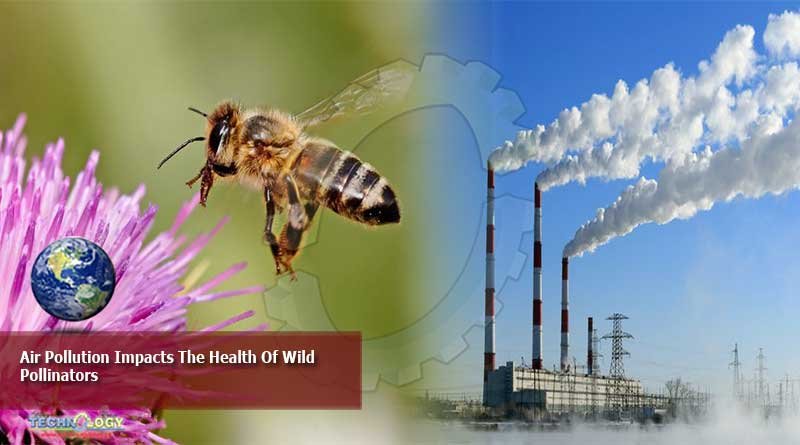Scientists from the Bangalore Life Science Cluster in India report that air pollution could be devastating for organisms we rely on most for our own survival— such as Wild pollinators.

Apis dorsata, or the Giant Asian honey bee, is not only a common resident of Indian cities, but it is an important contributor to India’s food security and ecosystems. These Wild pollinators produces over 80% of the country’s honey, and pollinates more than 687 plants in Karnataka alone.
75% of crop species rely to some extent on animals, and mostly insects, for their production. India is the largest fruit and second-largest vegetable producer in the world. Without insect pollinators such as the honey bees, the yearly mango export would lose more than Rs. 65,000 Lakh (Rs. 6500 million, or US$869 million). The importance of Wild pollinators and other pollinators to India’s plant biodiversity and agroeconomy cannot be overstated.
Lead by Shannon Olsson at the National Centre for Biological Sciences In Bangalore, Geetha Thimmegowda and colleagues embarked on a four-year study of more than 1800 wild bees, published in an open-access paper in Proceedings of the National Academy of Sciences.
Through a series of experiments along with honeybee expert Dr. Axel Brockmann of NCBS and cardiovascular researcher Dr. Dandipany Perunderai of the Institute for Stem Cell Science and Regenerative Medicine (inStem) and the Knight Cardiovascular Institute, the scientists found that Giant Asian honey bees from more polluted areas of the megacity of Bangalore exhibited lower flower visitation rates than in less polluted areas.
Bees from more polluted areas likewise showed significant differences in heart rhythmicity, blood cell count, and the expression of genes coding for stress, immunity, and metabolism. Repeating these experiments with lab-reared Drosophila found similar effects, suggesting that the impact of air pollution is not species-specific nor likely the result of other environmental factors.
Dr. Hema Somanathan, who studies bee behavior and pollination ecology at the Behavioural and Evolutionary Ecology (BEE) Laboratory, Indian Institute of Science Education and Research, Thiruvananthapuram notes:
“The study was done with wild bees naturally visiting flowers in Bangalore city and not in lab assays on reared honey bees kept in hive boxes that may already be stressed or immuno-compromised. Thus, in my opinion this study provides us with hard evidence that all is not well with our wild bees. Given the scale of landscape alteration and urbanization in India, it is expected that these effects are widespread and likely to worsen with time.”
Perhaps most strikingly, the researchers found more than 80% of the bees collected from the moderate and highly polluted sites died within 24 hours. These RSPM levels were similar to the “Interim Target II” guidelines proposed by the WHO. To this end, Arunabha Ghosh, founder and CEO of the Council on Energy, Environment and Water notes:
“So far, much of the air quality studies in India have either considered sources of pollution or impact on human health, and to an extent on economic productivity. This study covers important new ground, by examining the impact of air pollution on pollinators, which would have serious implications for agricultural output in India. Such findings further underscore the need to raise India’s ambient air quality standards.”
Shloka Nath, Executive Director at the India Climate Collaborative and the Head of Sustainability and Special Projects at Tata Trusts, commented:
“Better application of research and evidence in development policy-making can save lives, reduce poverty, and improve quality of life. In the case of this study, the research speaks for itself: we now have concrete proof that by polluting our air, we are not only endangering our own health, we are also affecting the wild animals and plants who depend on it for sustenance. This has far-reaching implications for the complex ecosystems we are part of, as these changes affect the quality of habitat and food sources we all depend on.”
the news is originally published at green car congress.
